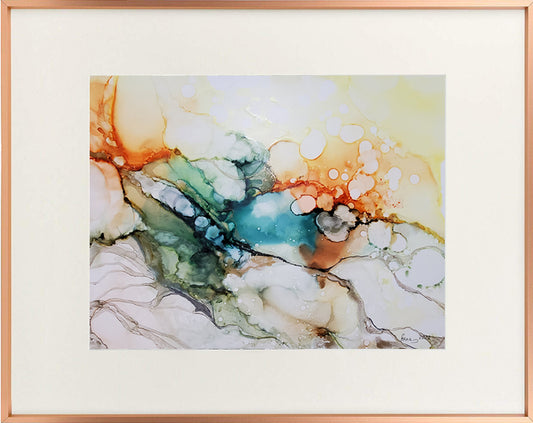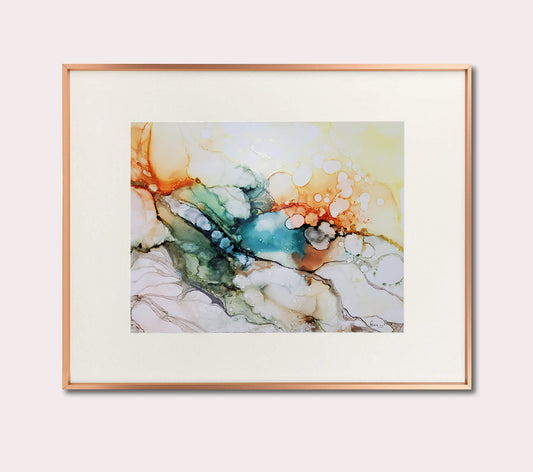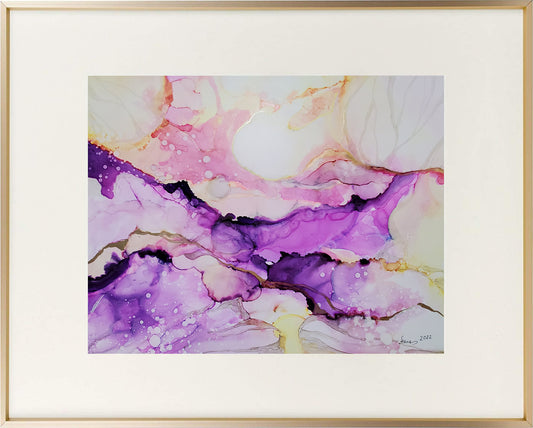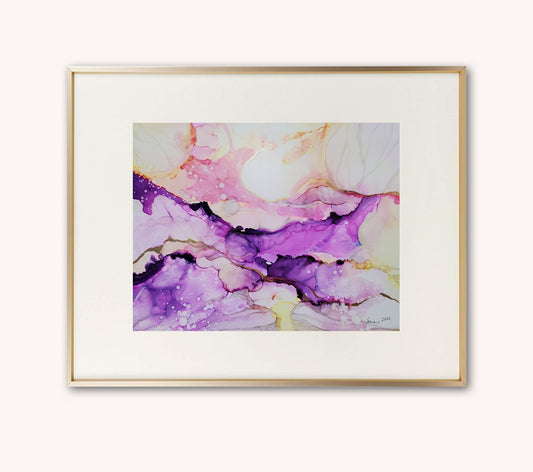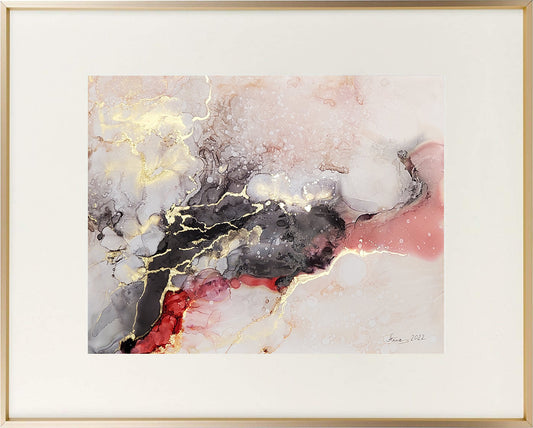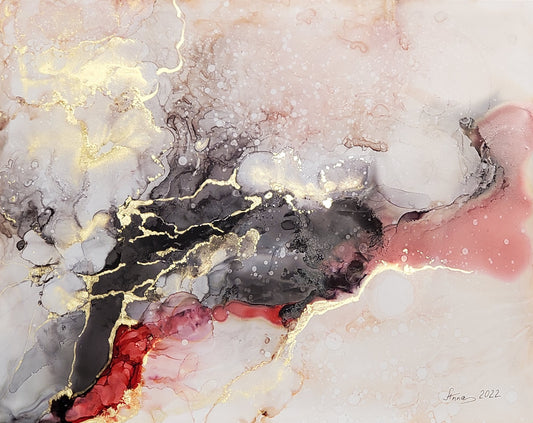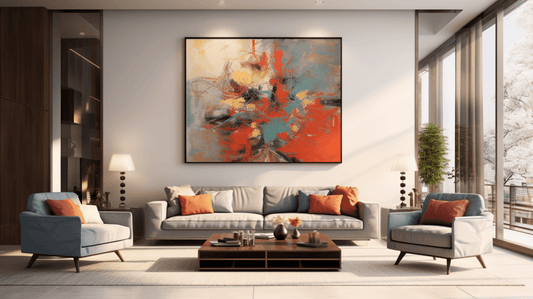
Texture and surface treatment play a vital role in the world of art, and this significance is particularly pronounced in abstract art. The realm of abstraction allows artists to explore new dimensions of creativity, often relying on unconventional techniques to convey emotion, depth, and complexity. In this article, we will delve into the rich tapestry of textures and surface treatments in abstract art, with a particular focus on the impasto, dripping, and scraping techniques. We will explore how these techniques have been employed by renowned artists to redefine the boundaries of visual expression, ultimately contributing to the evolving narrative of abstract art.
I. Impasto: The Bold and Sculptural Approach
Impasto, derived from the Italian word "impastare," meaning "to mix," is a technique that involves applying thick and heavily textured paint onto the canvas. The result is a three-dimensional, sculptural quality that invites the viewer to engage with the painting on both a visual and tactile level. Impasto can be attributed to the works of numerous artists, but none more famous than Vincent van Gogh.
Vincent van Gogh, one of the pioneers of impasto, is best known for his masterpiece "Starry Night." In this iconic painting, Van Gogh used impasto to create swirling, turbulent patterns in the night sky, using thick strokes of paint to capture the energy and turbulence of the cosmos. The texture of the paint adds a palpable depth and dynamism to the piece, making it one of the most recognizable and celebrated paintings in art history.

Another artist who employed impasto with remarkable skill was the American abstract expressionist Willem de Kooning. His work "Woman and Bicycle" is a prime example of impasto's bold and unapologetic approach. De Kooning's use of thick, gestural brushwork and the buildup of paint on the canvas create a sense of energy, tension, and raw emotion. The texture is not merely a visual element but a manifestation of the artist's inner turmoil and artistic passion.

Impasto, with its pronounced texture and tactile quality, offers abstract artists the means to convey depth and emotion that transcend the two-dimensional plane of the canvas. It engages the viewer in a multisensory experience, adding another layer of complexity to abstract art.
II. Dripping: The Spontaneity of Expression
Dripping is a technique that emerged in the mid-20th century and is closely associated with the influential abstract expressionist Jackson Pollock. This method involves letting paint drip or flow onto the canvas in a seemingly random and spontaneous manner. The result is a complex web of lines and colors that evoke a sense of chaos, energy, and raw emotion.
Jackson Pollock's "Autumn Rhythm (Number 30)" is a prime example of the power of dripping in abstract art. In this monumental work, Pollock dripped, poured, and flung paint onto the canvas with an almost hypnotic and unscripted rhythm. The result is a labyrinth of interconnected lines, colors, and textures that exude a sense of movement and depth. The viewer is immersed in the kinetic energy of the artwork, as though they are witnessing the very act of creation itself.

The significance of dripping in abstract art lies in its ability to capture the spontaneous and unmediated expression of the artist. It allows for a direct channeling of the artist's emotions onto the canvas, creating a visceral connection between the creator and the viewer. Dripping, with its unpredictability and unrestrained quality, challenges traditional notions of artistic control and invites the viewer to explore the depths of the artist's subconscious.
III. Scraping: Revealing Layers of History
Scraping is a technique that involves removing or scraping away layers of paint to reveal the underlying textures and colors. It is a process of excavation, where the artist unearths the history of the artwork, layer by layer. This technique can be used to create depth and complexity in abstract art, as well as to add an element of mystery and intrigue.
The artist Gerhard Richter is a master of the scraping technique, and his work "Cage" exemplifies the power of this approach. In "Cage," Richter scraped away layers of paint to reveal a complex and textured composition of colors and forms. The act of scraping not only uncovers the hidden layers of the artwork but also adds a sense of time and history to the painting. It is as though the viewer is peering into the past, witnessing the evolution of the artwork.

Scraping is a technique that invites contemplation and reflection. It challenges the viewer to consider what lies beneath the surface and to appreciate the history and evolution of the artwork. It adds a sense of narrative and depth to abstract art, making it more than just a visual experience but a journey of discovery.
IV. Synthesis of Techniques: Cy Twombly's Alchemy
Cy Twombly, an American artist known for his distinctive approach to abstraction, synthesized various techniques, including impasto, dripping, and scraping, to create a unique and compelling body of work. Twombly's work is often characterized by its expressive gestural marks, layers of paint, and a sense of spontaneity and controlled chaos.
In his series "Fifty Days at Iliam," Twombly combines impasto with dripping and scraping techniques to create a rich tapestry of texture and emotion. The impasto technique is evident in the thick and expressive marks that give the paintings a sculptural quality. Dripping is used to add a sense of movement and energy, while scraping unveils hidden layers of history and complexity. The result is a series of paintings that engage the viewer on multiple levels, inviting them to explore the layers of meaning and emotion within each artwork.

Cy Twombly's work demonstrates the power of combining different surface treatments to create a multifaceted and dynamic visual experience. His paintings are a testament to the versatility of these techniques and their ability to convey a range of emotions and narratives within the realm of abstract art.
V. Contemporary Explorations: Anish Kapoor and Texture
The significance of texture and surface treatment in abstract art continues to evolve in contemporary art. Anish Kapoor, a British-Indian sculptor and artist, is known for his exploration of texture and surface in his large-scale sculptures. His work challenges traditional boundaries between painting and sculpture and invites viewers to engage with art in a tactile and immersive manner.
Kapoor's "S-Curve" is a perfect example of his mastery of texture and surface. This sculpture, created from polished stainless steel, appears as a smooth and reflective surface from a distance. However, upon closer inspection, the viewer is drawn into the piece by the warped and distorted reflections on its surface. The texture of the sculpture changes as the viewer moves around it, creating an ever-shifting visual experience.

Kapoor's work reminds us that texture and surface treatment in abstract art are not limited to two-dimensional paintings but can extend into the realm of sculpture and installation. His sculptures engage the viewer in a dynamic interplay of light, reflection, and texture, inviting them to experience art in a wholly sensory way.
VI. Conclusion: The Endless Exploration
Texture and surface treatment in abstract art are a testament to the endless possibilities of artistic expression. Impasto, dripping, and scraping are just a few of the techniques that artists have harnessed to convey depth, emotion, and complexity in their work. As we have seen through the examples of renowned artists
and their innovative approaches, texture and surface treatment are essential elements that continue to redefine the boundaries of abstract art.
In the ever-evolving world of art, contemporary artists continue to push the envelope by experimenting with new materials, techniques, and technologies to create textures and surface treatments that challenge our perceptions and engage our senses in novel ways. The significance of these elements lies in their ability to create a profound connection between the artist and the viewer, inviting us to explore the layers of meaning, emotion, and history within each artwork.
As artists explore new frontiers, it is crucial for art enthusiasts and critics to embrace the diversity of texture and surface treatment in abstract art. These elements are not mere embellishments but integral components that contribute to the depth, complexity, and richness of the artistic experience. Whether it is the bold and sculptural quality of impasto, the spontaneous expression of dripping, the revelation of history through scraping, or the immersive experience of contemporary sculptures, texture and surface treatment are the language through which artists communicate with their audience.
In conclusion, the world of abstract art is a captivating journey through the exploration of texture and surface treatment. Artists use these techniques to convey their innermost thoughts, emotions, and visions. From the thick, tactile strokes of impasto to the unbridled chaos of dripping, and the revealing layers of scraping, these techniques add depth and meaning to the canvas, challenging viewers to engage on a visceral level. The work of artists like Vincent van Gogh, Jackson Pollock, Cy Twombly, and Anish Kapoor serves as a testament to the enduring significance of texture and surface treatment in the ever-evolving world of abstract art. As contemporary artists continue to experiment and push the boundaries of artistic expression, we can only anticipate that texture and surface treatment will remain at the forefront of this dynamic and captivating field, inviting us to explore new dimensions of art and creativity.
Intrigued by the fascinating world of abstract art? Your artistic journey doesn't have to end here. Explore a mesmerizing collection of captivating and modern abstract artworks by visiting our Abstract Art Collection and Shop. Our gallery is a treasure trove of creativity, where you can not only see but also acquire unique pieces that resonate with your aesthetic sensibilities. Dive into a realm of imagination, emotion, and innovation as you discover the transformative power of abstract art. Don't miss the opportunity to enrich your surroundings with these thought-provoking creations. Start your exploration now and let the art on this page inspire your soul.

